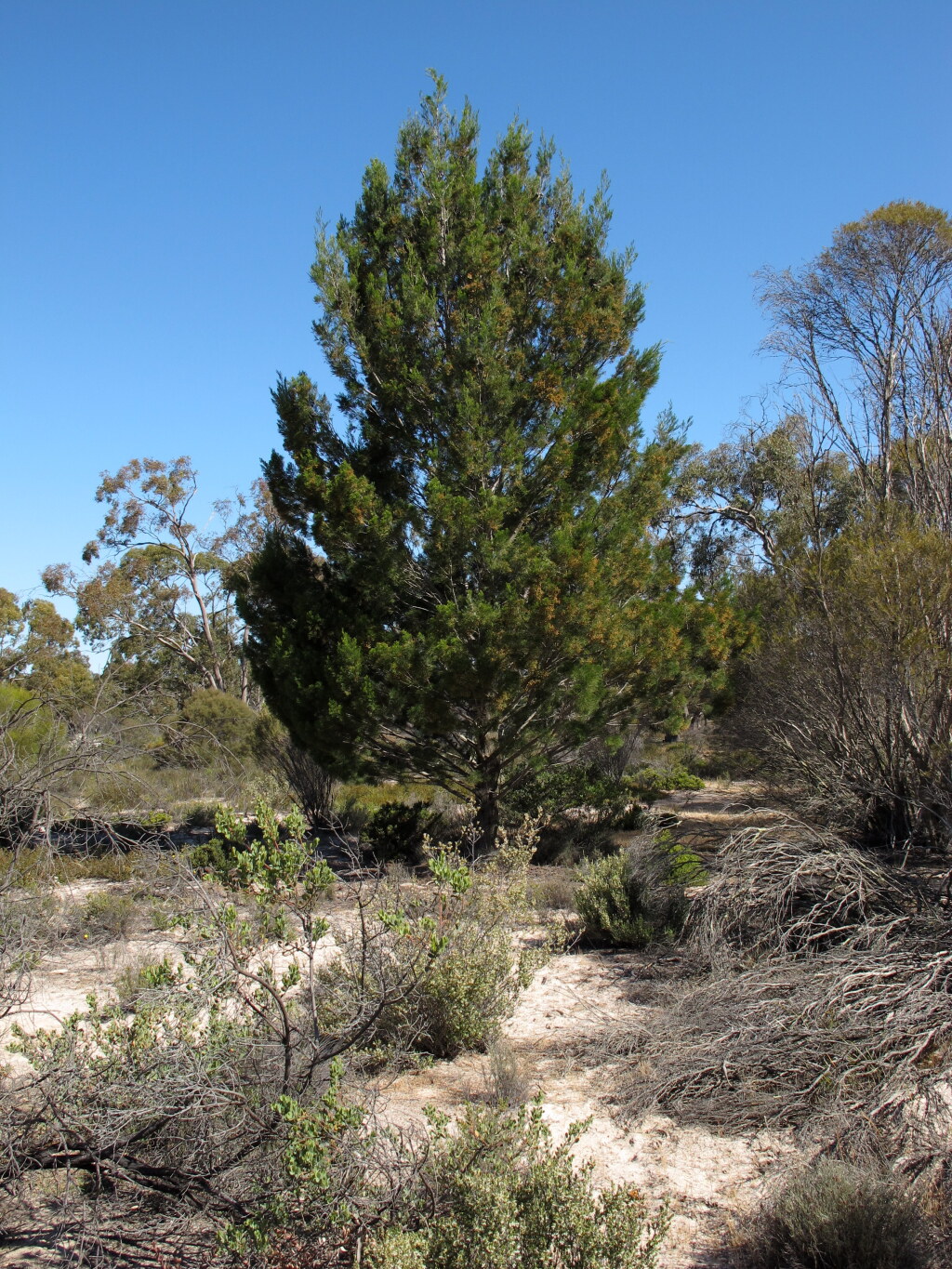Cupressaceae
Perennial evergreen trees or shrubs, monoecious or dioecious. Leaves mostly small and scale-like, often flattened for at least part of their length along stem, opposite or whorled. Male cones usually terminal, sporophylls usually opposite or whorled, each with several sporangia. Female cones on short shoots, scales opposite or spirally arranged, woody, rarely fleshy when mature, bearing 1–13 ovules each. Seeds numerous, often winged. Embryo with 2, rarely 3(–9) cotyledons.
30 genera, mostly in temperate regions; 4 native Australian genera, 1 native and 3 naturalised in Victoria
Cupressaceae is now usually regarded as including Taxodiaceae (with the exception of Sciadopitys, which is placed in Sciadopityaceae (Gadek et al 2000; Farjon 2005; Eckenwalder 2009; Farjon 2010).
Entwisle, T.J. (1994). Conifers (Pinophyta). In: Walsh, N.G.; Entwisle, T.J., Flora of Victoria Vol. 2, Ferns and Allied Plants, Conifers and Monocotyledons, pp. 113–121. Inkata Press, Melbourne.
 Spinning
SpinningSynonyms
Eckenwalder, J.E. (2009). Conifers of the world: the complete reference. Timber Presss, Portland, Oregon.
Farjon, A. (2005). A monograph of Cupressaceae and Sciadopitys. Royal Botanic Gardens, Kew, United Kingdom.
Farjon, A. (2010). A handbook of the world's conifers. Brill, Netherlands.
Gadek, P.A.; Alpers, D.L.; Heslewood, M.M.; Quinn, C.J. (2000). Relationships within Cupressaceae sensu lato: a combined morphological and molecular approach. American Journal of Botany 87(7): 1044–1057.



